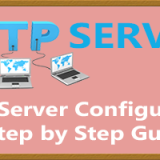kubeadm cluster configuration | ArkIT
Kubernetes, often abbreviated as K8s, is a powerful open-source container orchestration platform that automates the deployment, scaling, and management of containerized applications. Originally developed by Google and later donated to the Cloud Native Computing Foundation (CNCF), Kubernetes has emerged as the de facto standard for container orchestration in modern cloud-native environments. kubeadm cluster configuration
Benefits of Kubernetes:
- Portability: Kubernetes abstracts away the underlying infrastructure, making it possible to run applications consistently across various cloud providers or on-premises data centers.
- Scalability: Applications can easily scale up or down based on demand, ensuring optimal resource utilization and performance.
- High Availability: Kubernetes supports the deployment of applications in a highly available manner, minimizing downtime and ensuring continuous service availability.
- Resource Efficiency: The platform optimizes resource utilization by scheduling containers based on available resources, preventing both underutilization and overutilization.
- Automated Rollouts and Rollbacks: Kubernetes facilitates seamless application updates by automating the rollout of new versions and providing easy rollback mechanisms in case of issues.
- Declarative Configuration: Desired state configurations enable users to declare the state they want, allowing Kubernetes to handle the complexities of achieving and maintaining that state.
- Ecosystem Integration: Kubernetes has a rich ecosystem of tools and extensions that enhance its capabilities, covering areas such as monitoring, logging, and security.
Prerequisites
- 3 Servers (If AWS t2.medium EC2 type)
- OS Ubuntu 22.04 LTS
- 2 vCPUs or more
- Minimum 4GB RAM
- Familiarity with the Kubernetes Components.
- On-Primises should have three VMs or Three Physical servers with communication enabled between them (Network)
Controller and Worker Nodes Setup
Configure Network Prerequisites
This step configures IPv4 forwarding and lets iptables see bridged traffic. The overlay module is needed by Docker to work with the overlay network driver. The br_netfilter module is needed by Kubernetes to enable network filtering and NAT (Network Address Translation).
Refer to this Kubernetes documentation for more information.
cat <<EOF | sudo tee /etc/modules-load.d/k8s.conf overlay br_netfilter EOF
Insert the Kernel module
sudo modprobe overlay sudo modprobe br_netfilter
Create the k8s configuration file for bridge iptables
cat <<EOF | sudo tee /etc/sysctl.d/k8s.conf net.bridge.bridge-nf-call-iptables = 1 net.bridge.bridge-nf-call-ip6tables = 1 net.ipv4.ip_forward = 1 EOF
sudo sysctl --system
Check and confirm modules are inserted into the kernel level
lsmod | grep overlay lsmod | grep br_netfilter
Verify that the net.bridge.bridge-nf-call-iptables, net.bridge.bridge-nf-call-ip6tables, and net.ipv4.ip_forward system variables are set to 1 in your sysctl config by running the following command:
sysctl net.bridge.bridge-nf-call-iptables net.bridge.bridge-nf-call-ip6tables net.ipv4.ip_forward === Output === net.bridge.bridge-nf-call-iptables = 1 net.bridge.bridge-nf-call-ip6tables = 1 net.ipv4.ip_forward = 1
Ensure to run these steps to configure the required network settings on all nodes.
Configure container runtime
This step configures container runtime for all nodes on the cluster. Kubernetes 1.28 requires that you use a runtime that conforms with the Container Runtime Interface (CRI), which is an API for container run-times to work with kubelet. We will use containerd as the container runtime for this Kubernetes cluster.
Refer to this Kubernetes documentation for more information.
-
Install Docker Engine (as it includes
containerdruntime).Refer to this Docker documentation for more information.
- Update the
aptpackage index, install the required packages, and get the official GPG keys for the Docker package repositories:
- Update the
sudo apt-get update sudo apt-get install ca-certificates curl gnupg sudo install -m 0755 -d /etc/apt/keyrings curl -fsSL https://download.docker.com/linux/ubuntu/gpg | sudo gpg --dearmor -o /etc/apt/keyrings/docker.gpg sudo chmod a+r /etc/apt/keyrings/docker.gpg
Add the docker repository to the apt sources
echo \ "deb [arch="$(dpkg --print-architecture)" signed-by=/etc/apt/keyrings/docker.gpg] https://download.docker.com/linux/ubuntu \ "$(. /etc/os-release && echo "$VERSION_CODENAME")" stable" | \ sudo tee /etc/apt/sources.list.d/docker.list > /dev/null
update the apt package cache
sudo apt-get update
Install Docker (Including containerd)
sudo apt-get install docker-ce docker-ce-cli containerd.io docker-buildx-plugin docker-compose-plugin
Make Daemon file for docker to avoid service errors later
sudo mkdir /etc/docker
cat <<EOF | sudo tee /etc/docker/daemon.json
{
"exec-opts": ["native.cgroupdriver=systemd"],
"log-driver": "json-file",
"log-opts": {
"max-size": "100m"
},
"storage-driver": "overlay2"
}
EOF
sudo systemctl enable docker
sudo systemctl daemon-reload
sudo systemctl restart docker
Confirm that Docker Engine installation is sucessful by running the hello-world image
sudo docker run hello-world
Switchoff or Disable the Swap permanently in all the nodes
sudo swapoff -a sudo sed -i '/ swap / s/^\(.*\)$/#/g' /etc/fstab
Configure the containerd runtime environment
Refer to this Kubernetes documentation for more information.
Login as a root user
sudo -s
Create a default containerd configuration file using below command
containerd config default > /etc/containerd/config.toml
Open config.toml in a any text editor
vi /etc/containerd/config.toml
Change the value of SystemdCgroup from false to true (it should be visible around line number 125 in config.toml)
SystemdCgroup = true
Restart containerd service
systemctl restart containerd
Exit from root user
exit
Ensure to run these steps to configure the container runtime on all nodes.
Install kubeadm, kubelet, and kubectl
In this step, we install these packages on all nodes:
kubeadm: The command to bootstrap the clusterkubelet: An agent that runs on all nodes in the cluster and does things like starting pods and containerskubectl: The command line utility to talk to the cluster
Refer to this Kubernetes documentation for more information.
Since we are using Ubuntu 22.04 LTS, we will use instructions for Debian-based distributions.
Update the apt package index, install the required packages, and get the official GPG keys for the Kubernetes package repositories:
sudo apt-get update sudo apt-get install -y apt-transport-https ca-certificates curl curl -fsSL https://pkgs.k8s.io/core:/stable:/v1.28/deb/Release.key | sudo gpg --dearmor -o /etc/apt/keyrings/kubernetes-apt-keyring.gpg
Add the Kubernetes repository to the apt sources
echo 'deb [signed-by=/etc/apt/keyrings/kubernetes-apt-keyring.gpg] https://pkgs.k8s.io/core:/stable:/v1.28/deb/ /' | sudo tee /etc/apt/sources.list.d/kubernetes.list
Update the apt package cache and index, and install packages
sudo apt-get update sudo apt install -y kubelet kubeadm kubectl
Avoid automatic update of above packages to it wont be in version mismatch later
sudo apt-mark hold kubelet kubeadm kubectl
Ensure to install kubeadm, kubelet and kubectl on all nodes
Execute Only on Controller Node
Run these commands only on the VM designated as the controller (master) node.
sudo -s
Initialize the API server, Remember to change the <ControllerVM-IP> with the actual IP address (In case Cloud instance use private IP)
kubeadm init --apiserver-advertise-address=<ControllerVM-IP> --pod-network-cidr=10.244.0.0/16 exit
run as normal user kube config
mkdir -p $HOME/.kube sudo cp -i /etc/kubernetes/admin.conf $HOME/.kube/config sudo chown $(id -u):$(id -g) $HOME/.kube/config
Deploy Weave network config
kubectl apply -f https://github.com/weaveworks/weave/releases/download/v2.8.1/weave-daemonset-k8s.yaml
Create Cluster join command
sudo -s kubeadm token create --print-join-command
Worker Nodes ONLY
Copy the output from the above comand cluster join step and run on the worker nodes.
Example:
sudo kubeadm join 192.168.175.100:6443 --token jno9md.v9u1snltrwkv3vix --discovery-token-ca-cert-hash sha256:74b58d0e840e43a7051dcc4d7388b836dbd187c732fbfd3008051d10a14e271a
The Kuberneted cluster is now configured
Now check the status of the nodes and cluster (RUN as NORMAL user)
kubectl get nodes
Thats all explained Kubernetes Cluster setup like production.
Thanks for your wonderful Support and Encouragement
- Get Email | Download E-Books
- Facebook Page
- Youtube Channel
- Exclusive Telegram Group
- Discuss On WhatsApp Group






